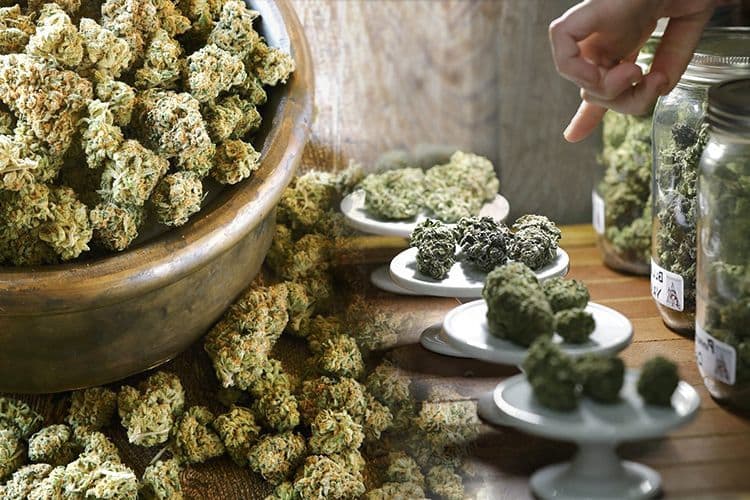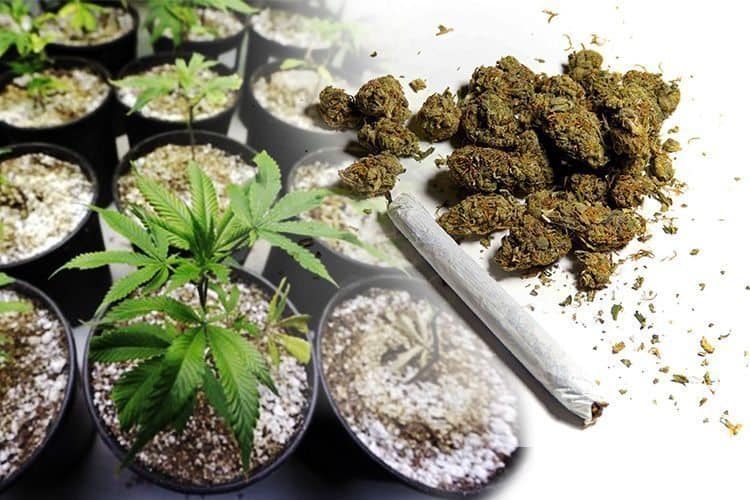Cannabis exists in many varieties and sub-species. Cultivators and farmers have long been breeding different varieties with certain characteristics to create hybrids and specific strains.
Each cannabis strain has a different concentration of the cannabinoids tetrahydrocannabinol (THC), cannabidiol (CBD), as well as other compounds.
Producers grow the plants to have a certain look, taste, and effect on the user and brand them accordingly.
Currently, reports on the effects of different cannabis strains come predominantly from people’s experiences. Although researchers are studying the effects of a variety of cannabis strains on a range of medical conditions, there is still a long way to go in this area.
Keep reading to learn more about cannabis strains, and which are the most popular.
What are cannabis strains?

All strains of cannabis derive from the Cannabaceae family of plants. Some experts consider that Cannabis indica and Cannabis sativa are the two main subspecies, although some people think they are separate species.
To create a strain, cultivators select a variety of traits to produce the effects they want. This is a similar process to how breeders create particular characteristics in dogs.
People often describe cannabis strains as being indica, sativa, or hybrid. Hybrid refers to a strain created by combining both indica and sativa strains.
Here are some examples of cannabis strains and the plant they derive from:
| Strain name | Plant species |
| Kush | Pure Cannabis indica or Cannabis indica hybrid |
| Afghan Kush, Hindu Kush, Green Kush, Purple Kush | Pure Cannabis indica |
| Blueberry Kush, Golden Jamaican Kush | Cannabis indica hybrid |
| Diesel Haze | Pure Cannabis sativa or Cannabis sativa hybrid |
Many producers crossbreed cannabis plants to develop new strains with specific characteristics. Experts suggest that there are over 700 strains of cannabis.
One of the most important characteristics of a cannabis strain is the THC content. Some rules exist on naming each strain, but many producers do not name their products according to these rules.
Despite these classifications, hybridization and crossbreeding has meant that people cannot tell exactly how much THC is in a particular plant by simply looking at its physical features.
Experts suggest it is impossible to guess the composition of a cannabis plant by looking at its height, branching, or leaf appearance.
The only way to know the chemical composition of a cannabis-derived product is to analyze it in a biochemical assay.
THC vs. CBD

So far, most research into the medical benefits of cannabis has focused on THC and CBD.
However, researchers and scientists remain unsure of the ideal quantities of THC and CBD that people should use for various medical conditions or recreation.
Although both THC and CBD are cannabinoids, they act differently in the body because they target different areas in the brain.
According to a 2020 article, people who use products with a higher THC content may experience psychoactive effects, such as euphoria and a greater sensitivity to things such as color and taste. However, THC also can lead to anxiety and paranoia.
CBD, on the other hand, is non-intoxicating. Some people report mild physiological effects, such as reduced anxiety when using CBD.
Animal studies suggest CBD may help improve vomiting, nausea, pain, and offer neuroprotective effects on the brain.
However, since CBD can affect mood, some experts describe it as a non-intoxicating but psychoactive compound.
The Food and Drug Administration (FDA) have approved some cannabis-related products including:
- two synthetic THC medications for the treatment of anorexia associated with AIDS
- another synthetic cannabis-related product for the treatment of nausea and vomiting associated with cancer treatment
- cannabis-derived CBD for children 2 years and older who suffer from rare seizure disorders
Studies are ongoing to determine whether CBD has other physiological effects. Preliminary human data suggests CBD could benefit conditions, such as schizophrenia and even opioid addiction.
Sativa vs. Indica
The terms indica and sativa derive from the biolgical classification of these species, which is based on physical characteristics. Cannabis indica plants are shorter and have broad, dark green leaves. Cannabis sativa plants grow taller and develop thinner, pale green leaves.
In the past, people used these terms to differentiate the cannabis plants in terms of their effects and THC or CBD content. An article in Cannabis and Cannabinoid Research seems to dispel these claims.
Previously, people believed that Cannabis indica plants contained higher levels of CBD. As a result, cultivators and dispensaries marketed indica-derived strains as a product that would lead to a more ‘relaxed high’.
Conversely, Cannabis sativa-derived strains that contained higher levels of THC would provide a more energetic high.
Many experts caution against this generalization, noting that even if this classification scheme were true, there is no way to be sure of the accuracy of any strain name.
There is no third-party agency that validates which strain names belong to indica, sativa, or hybrid.
To know exactly what is in a cannabis product, the manufacturers must analyze the product in a biochemical assay.
It is easy to see why this topic continues to cause debate. Cannabis is a complex plant, and, as of right now, there seems no obvious or simple way to categorize the various strains by ‘effect on the user.’
Each person who tries a strain of cannabis may have a different experience.
For example, some people describe the effects of Cannabis indica-derived products as sedating. However, other components of cannabis can also cause sedation, as well as other psychoactive effects. Compounds include:
- linalool
- myrcene
- limonene
- alpha-pinene
These components are often absent in a description of a cannabis-derived product, which is why some experts suggest that manufacturers should abandon naming their products as sativa or indica. Using these names is misleading and far more complex than people once thought.

To me all marijuana is the same. It is just like different people with little variations, all from the same inherent species. But yes what you are saying above is also true, right now I am on a 2 gram shot of white widow, and so you can expect me to be philosophical!
I do not think we can number these. There are unlimited and new hybrids are also coming up everyday. Sometimes I wonder, people are experimenting with higher and higher THC hybrids, where would this end?